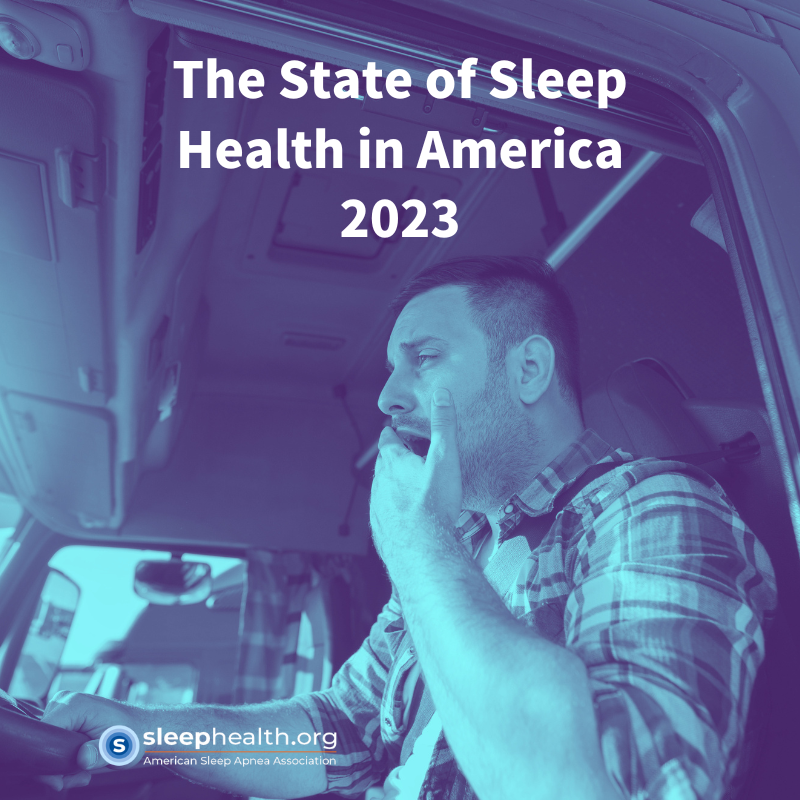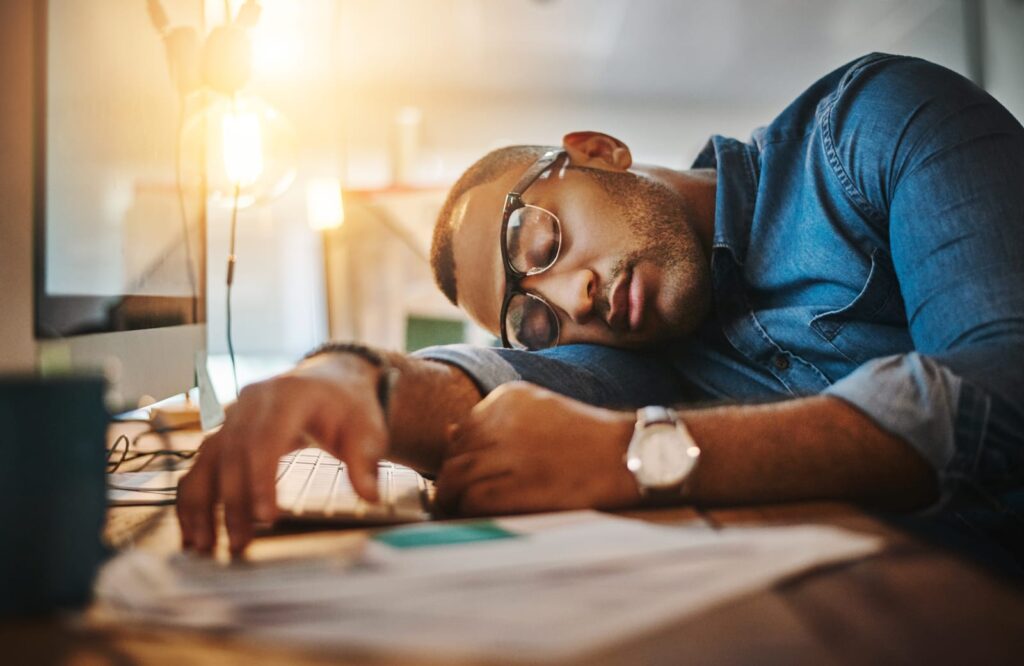
Good sleep promotes good health. Sleep is one of the three pillars of health, along with nutrition and movement – it is a fundamental part of our overall health and wellbeing. Sleep comprises one-third of an individual’s life, affects all aspects of health and, conversely, is affected by everything that is going on in the mind and body, as well as in the environment.
Despite the all-encompassing importance of sleep, the state of sleep health in America is dismal. But the good news is, SleepHealth.org is working with individuals and organizations to reverse current trends and help ensure that everyone who wants and needs to enjoy the many benefits of regular, restorative sleep – and that really is everyone –has the tools to do so.
If you’re having sleep difficulties, you are not alone. About 50 to 70 million Americans have sleep disorders, and 1 in 3 adults (about 84 million people) do not regularly get the recommended amount of uninterrupted sleep they need to protect their health.

In a 2022 Gallup survey, only 32% of Americans said they got “excellent” or “very good” sleep; 35% described their sleep as “good”; and 33% said their sleep was “fair” or “poor.”
In 2020, the latest year for which federal data are available, 14.5% of US adults had trouble falling asleep most days or every day in the past month. Women (17.1%) were more likely to have trouble falling asleep than men (11.7%). Non-Hispanic Asian adults (8.1%) were less likely than non-Hispanic Black (13.7%), Hispanic (14.3%), and non-Hispanic White (15.1%) adults to have trouble falling asleep. The percentage of adults who had trouble falling asleep decreased with age. Specifically, recent data from the Better Sleep Council show that more than one-third (44%) of excellent sleepers are 55+ and 27% are 65+.
Many (17.8%) of those who managed to fall asleep had trouble staying asleep. Again, women (20.7%) were more likely than men (14.7%) to have trouble staying asleep, and again, there were some racial/ethnic and age differences.
This website is dedicated to sleep health. We provide specific strategies for dealing with difficulties in all aspects of sleep, including sleep disorders. Search or browse, and learn!
But meanwhile, check out our 11 Tips To Improve Sleep for a sleep health “quick fix”!
Sleep Duration and the State of Sleep Health in America
Americans increasingly are becoming aware of the importance of sleep health. Over half (55%) cited getting a good night’s sleep as a “major priority” on an average weekday — prioritizing it more than many other lifestyle factors, such as spending time with family and friends (45%) or eating healthy (40%).
The prevalence of adults who reported short sleep duration was highest in the following subgroups: men (33.4%), adults ages 25 to 44 years (36.4%), non-Hispanic Native Hawaiian and Other Pacific Islander (47.0%), and non-Hispanic Black or African American (43.5%).
Interestingly, the age-adjusted prevalence of adults who reported short sleep duration varied by state in 2020, ranging from 29.3% in Colorado to 42.8% in West Virginia.
A number of strategies may be used to treat short sleep duration. These include lifestyle changes such as limiting nap time, avoiding alcohol and other substances before bedtime, exercising regularly, ensuring exposure to natural sunlight daily and developing a nighttime routine. Other treatments may include light therapy, chronotherapy and other cognitive behavior techniques.
Sleep Disorders
Sleep disorders are a major public health concern. The most recent data in the literature on the prevalence of sleep disorders found significant increases among some of the most common sleep disorders in the US from 2013-2016. The increases likely continued to today.
According to the study, the prevalence of obstructive sleep apnea increased 41% over the study period, and narcolepsy increased 14%. Large increases in prevalence were also seen for hypersomnia (32%), periodic limb movement disorder (30%), and rapid eye movement (REM) sleep behavior disorder (64%). We can speculate that that the prevalence of other disorders, such as restless legs syndrome, non-REM sleep arousal disorders and circadian rhythm sleep-wake disorders also increased.
One study found that office visits for insomnia, the most common sleep disorder, increased 11-fold between 1992-2015. Insomnia management is costly; an earlier study of a managed care population found an 80% increase in healthcare costs after an insomnia diagnosis.
Importantly, sleep disorders affect members of every race/ethnicity, socioeconomic status, age and sex.
Despite the high prevalence of sleep disorders, most go undiagnosed and untreated. For example, although obstructive sleep apnea affects about 20% of US adults, 90% are undiagnosed. A review of sleep disorders and sleep deprivation found that more than 60% of adults have never been asked about the quality of their sleep by a physician, and fewer than 20% have ever initiated such a discussion.
Sleepiness affects vigilance, reaction times, learning abilities, alertness, mood, hand-eye coordination, and the accuracy of short-term memory. Excessive Daytime Sleepiness has been identified as the cause of a growing number of on-the-job accidents, automobile crashes and multi-model transportation tragedies. The impact on American life and economy is enormous. A recent Gallup poll found that workers who typically get a poor night’s sleep — estimated to be 7% of the US workforce — report more than double the rate of unplanned absenteeism compared with other workers, resulting in an estimated $44.6 billion in lost productivity each year.
Poor sleepers reported 2.29 days of unplanned missed workdays in the past month due to poor health, compared with 0.91 days for all other workers, after controlling for factors that can affect both sleep and health-related absenteeism, including all major demographics, general overall health, clinical depression/anxiety, significant daily stress and COVID-19. That poll also found that workers who sleep poorly are more likely to change jobs.
On the positive side, and in keeping with the mission of this website, adopting good sleep-health behaviors can help prevent or lessen the symptoms and consequences of poor sleep and sleep disorders. Our site also provides information on additional treatments that work for specific sleep disorders, such as sleep apnea.
How Has the Pandemic Affected Sleep?
The Better Sleep Council conducted a survey of a nationally representative sample of 2,000 Americans ages 18-55+ that included questions regarding the pandemic’s impact on sleep. The survey found that 48% of those who self-identified as poor sleepers said their mental health declined in the past year, particularly among parents. More than two-thirds (70%) said they wake up tired and 60% said they rarely, if ever, wake up rested or refreshed. Poor sleepers were also more likely to have increased their screen time and alcohol consumption during the pandemic, both of which can adversely affect sleep.
By contrast, those who self-identified as excellent sleepers said they continued to participate in a range of activities and many exercise regularly and actually increased their exercise during the early days of the pandemic. The survey found excellent sleepers were more likely to be older, have a higher education and feel good about the economy.
That does not mean that poor sleepers, including those who are younger and less affluent, can’t start right now to enjoy better sleep health. Following our 11 tips is a good way to start making the transition from poor to excellent sleep. Continue by browsing through our information on good sleep hygiene and sleep
Sleep Health
Learn More
Get important news and tips to guide you on your road to healthy sleep. Subscribe to our newsletter now.

